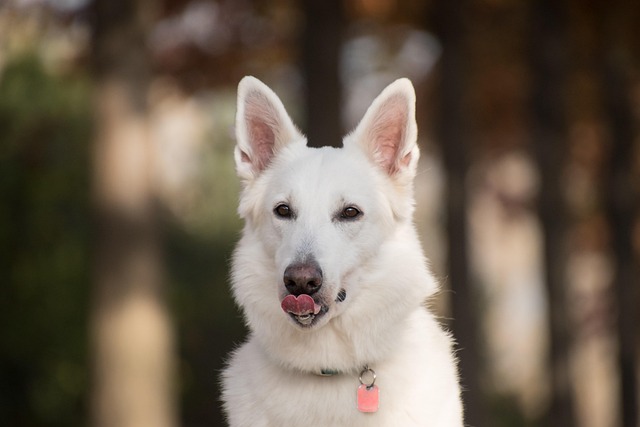
how to help senior dog with weak back legs
Watching your senior dog struggle to stand up, climb stairs, or even walk across the room because of weak back legs is heart-wrenching.
During the time we spend with our dogs, every subtle change in them tugs at our heartstrings. And when a dog enters the estrus period, it is an important stage in its life journey. As an owner, accurately determining whether a dog is in estrus can not only help us take better care of it but also avoid some unnecessary troubles. So, how exactly can we keenly detect that our dog has stepped into the "mysterious zone" of estrus?
When a dog enters the estrus period, the most intuitive changes often occur in its body. When a female dog is in estrus, there will be obvious swelling in the vulva area. This degree of swelling is significantly different from normal times, just like a balloon gradually bulging as it is inflated. Moreover, there will be bloody secretions flowing out of its vagina. At first, the color may be darker, and as time goes by, the color will gradually fade. This is a strong signal of a dog's estrus. Once the owner notices such changes in the dog's vulva, they should be alert and know that the dog may be in a special period.
The changes in behavior should not be overlooked either. Dogs in estrus will become extremely restless in their temperament. A dog that was originally gentle and well-behaved, and liked to lie quietly by the side, may now frequently pace around the room, with an indescribable eagerness in its eyes. They will look out of the window from time to time, as if expecting something, and may also frequently scratch the door with their paws, trying to break free and run out. This eager behavior of wanting to go out is because they are influenced by hormones in their bodies and have a strong desire to contact the opposite sex. In addition, the dog's appetite may also fluctuate. Some dogs will have a decreased food intake and lose interest in the food they usually like the most, while some dogs may have a greatly increased appetite and show extraordinary gluttony.
 The dog's barking will also change during the estrus period. A dog that usually has a clear and crisp bark may now emit a long, low, and slightly plaintive bark, as if telling the owner about its inner discomfort and longing. This kind of barking may be more frequent at night, breaking the tranquility of the night and making it difficult for the owner to sleep peacefully. Moreover, their degree of dependence on the owner will also change. Some dogs will become more clingy, closely following the owner all the time and seeking more attention and comfort from the owner; while some dogs may become relatively independent and no longer respond to the owner's call as actively as before.
The dog's barking will also change during the estrus period. A dog that usually has a clear and crisp bark may now emit a long, low, and slightly plaintive bark, as if telling the owner about its inner discomfort and longing. This kind of barking may be more frequent at night, breaking the tranquility of the night and making it difficult for the owner to sleep peacefully. Moreover, their degree of dependence on the owner will also change. Some dogs will become more clingy, closely following the owner all the time and seeking more attention and comfort from the owner; while some dogs may become relatively independent and no longer respond to the owner's call as actively as before.
In addition to the above obvious characteristics, some of the dog's daily habits will also change quietly. For example, they may frequently lick their vulva area. This is to clean the secretions, but at the same time, it is also an instinctive behavior to attract the attention of the opposite sex. When going for a walk outdoors, the dog will become extremely excited, be particularly sensitive to the surrounding smells, and keep sniffing the ground, walls, and other places, trying to find the estrus signals left by other dogs. They may also take the initiative to approach strange dogs, especially those of the opposite sex, and show extraordinary enthusiasm.
For male dogs, although they do not have obvious physical changes like female dogs, they also have unique manifestations during the estrus period. They will become very aggressive, be hostile to other male dogs, and a fight may break out with the slightest carelessness. Moreover, male dogs will urinate frequently everywhere, marking their territory through the smell of their urine, and at the same time, it is also to attract the attention of female dogs. Their emotions will also become extremely unstable, easily irritable and restless. They may be unusually active at home and have difficulty calming down.
When determining whether a dog is in estrus, the owner needs to invest enough patience and carefulness. Every dog is unique, and there may be slight differences in their manifestations during estrus. We should carefully observe every change in the dog's body and behavior, because these changes are the "special language" that the dog conveys to us. Only by accurately interpreting these signals can we give them the most attentive care and companionship during the dog's estrus period. During this special period, the dog's heart is actually fragile and uneasy, and they need more understanding and company from the owner.

Watching your senior dog struggle to stand up, climb stairs, or even walk across the room because of weak back legs is heart-wrenching.

Seeing your once-bouncy pup slow down, sleep more, or struggle to jump on the couch can tug at your heartstrings—but caring for an older dog

You open the door after a walk, and your pup bolts inside—leaving muddy paw prints all over your apartment floor.

Finding a tick crawling on your dog but not yet latched can make your heart race—even if it hasn’t bitten yet, those tiny pests carry risks like Lyme disease.

Standing in the pet store staring at rows of dog food labels can feel overwhelming—especially when you’re looking for the right fit for your tiny adult Chihuahua, Yorkie

You’ve had your tiny Yorkie or Shih Tzu since they were a wiggly puppy, and now you’re wondering: When do they become a “senior”? Many new U.S.